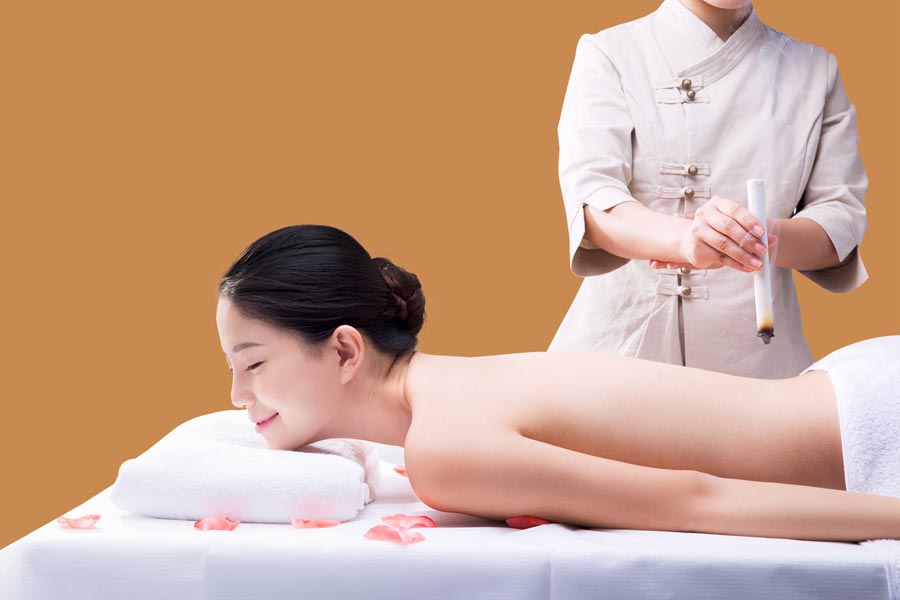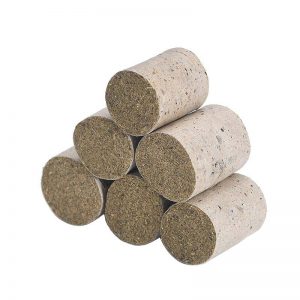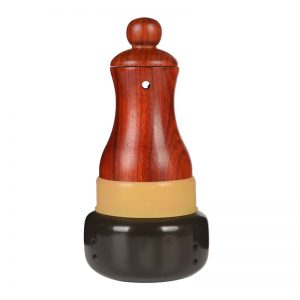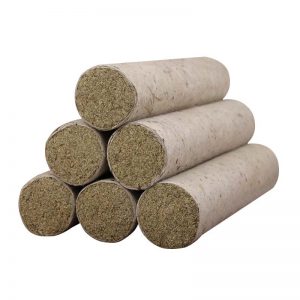The manifestations of primary dysmenorrhea include pain or distention in the lower abdomen before, after, or during the menses, accompanied by headache, fatigue, dizziness, nausea, vomiting, diarrhea, distension or pain in the lower back or legs, and no organic genital disease.
In TCM, primary dysmenorrhea is called painful menstruation or abdominal pain during menstruation. The main mechanism is obstructed qi and blood. Pain can occur when the lower jiao is invaded by cold damp, which lodges in the uterus and congeals the menstrual blood, making normal blood movement impossible. This can happen when one is attacked by an external cold, eats cold food or drink, or sits or lies on a wet floor. Pain can also be caused by liver constraint and qi stagnation that blocks the movement of blood, or obstruction of the Chong Mai and Ren Mai. This is what is meant by the principle, “When there is a stoppage, there is pain.” Finally, pain can be due to post-menstrual deficiency of the sea of blood and a lack of nourishment of the Chong Mai and Ren Mai. This can be due to deficiency of essence and blood, weak constitution, liver and kidney deficiency, or having had too many children.
Clinical manifestations of primary dysmenorrhea
- Pain or distention in the lower abdomen, and a sore and heavy lumbosacral area before or after the menstrual period.
- There may also be headaches, fatigue, dizziness, nausea, vomiting, diarrhea or abdominal distension.
- Primary dysmenorrhea does not involve organic disease found by ultrasound, hysteroscopy or other examinations.
4 Acupuncture points for primary dysmenorrhea
Warming the channels and dissipating cold are the most common therapeutic principles. However, since the branch should be treated in acute diseases, relaxing tension and relieving pain is the first priority. Relevant acupoints are chosen based on the following principles: the liver governs the flow of qi and prefers free movement; the liver stores the blood and governs the sea of blood; the kidney governs reproduction and the anterior and posterior yin (the genitals and anus).
1. EX-CA1 Acupoint (Zigong)
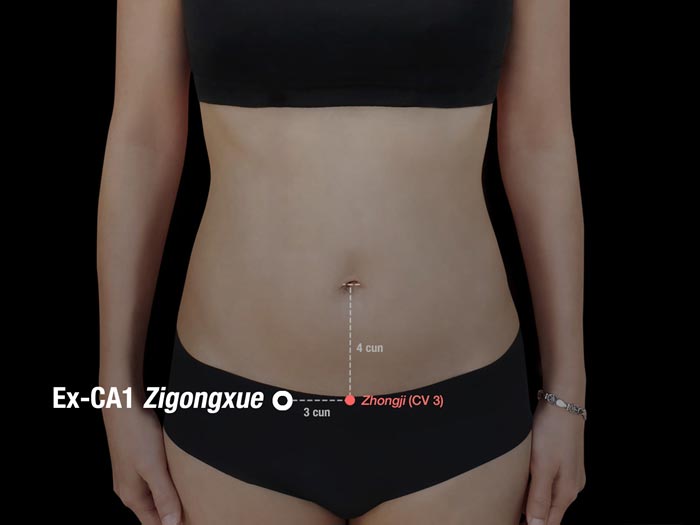
Location: On the lower abdomen 4 cun below the umbilicus, 3 cun lateral to CV 3.
Effect: Regulates menstruation, and relieves pain.
2. CV 4 Acupoint (Guanyuan)
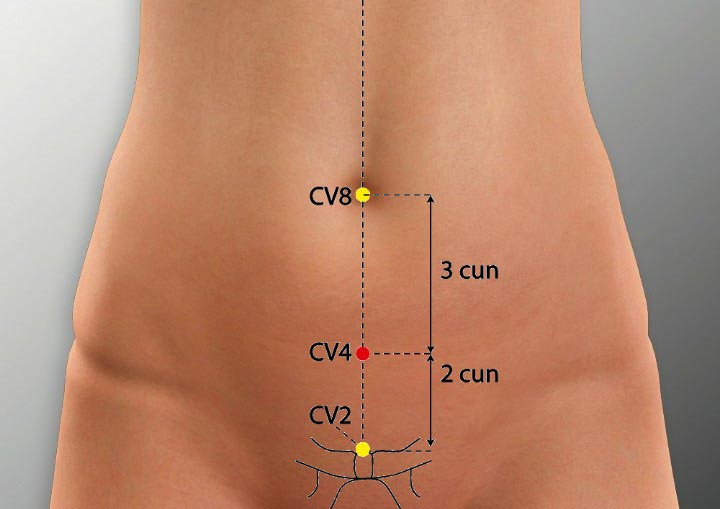
Location: On the lower abdomen on the anterior midline, 3 cun below the umbilicus.
Effect: Warms and supplements original yang, warms the uterus, dissipates cold to relieve pain.
3. BL 32 Acupoint (Ciliao)
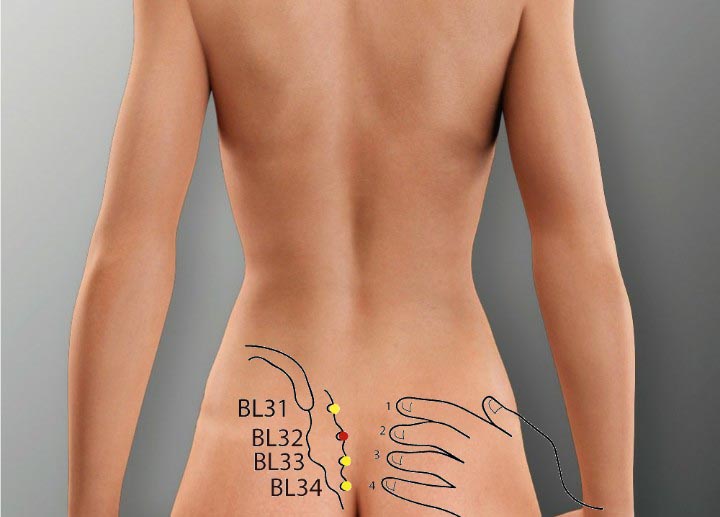
Location: On the medial-inferior side of the posterior inferior iliac spine, over the second posterior sacral foramina.
Effect: Regulates the menses, relieves pain.
4. SP 6 Acupoint (Sanyinjiao)
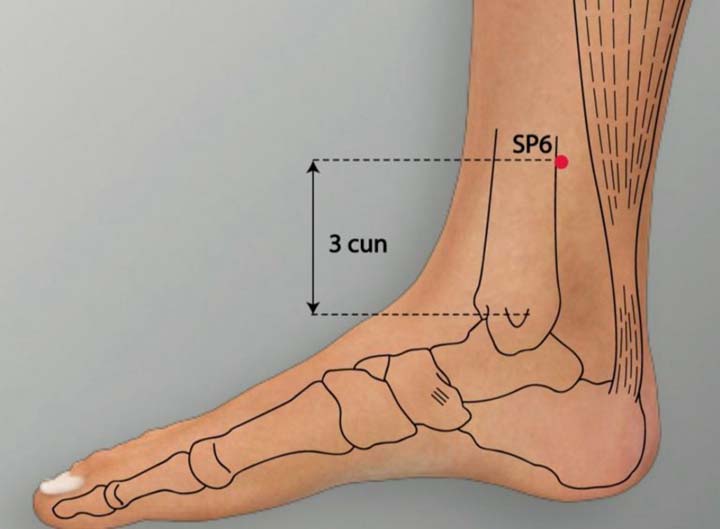
Location: On the medial lower leg 3 cun above the medial malleolus, in the depression posterior to the medial border of the tibia.
Effect: Regulates blood, frees the menses, dispels stasis, and relieves pain.
Moxibustion treatment methods
- Mild moxibustion on CV 4 and EX-CA1. The patient should feel heat penetrating into the abdominal cavity and expanding throughout the abdomen. Located on the ren mai, CV 4 is an intersecting point of the three yin channels of the foot, and can warm and supplement original yang, warm the uterus, and dissipate cold to relieve pain. EX-CA1 is an important acupoint for regulating the uterus, and is able to regulate the menses and relieve pain.
- Double-point mild moxibustion on BL 32. The patient should feel heat penetrating into the abdominal cavity or expanding over the lumbosacral region or lower extremities. An important acupoint for treating urogenital diseases, BL 32 can regulate the menses and relieve pain.
- Double-point mild moxibustion on SP 6. In some patients the heat will reach the abdomen. If it fails to do so, administer relaying moxibustion with another moxa stick on the most proximal part the heat has reached to make the transmission arrive at the abdomen. Lastly, administer mild moxibustion on both SP 6 and the abdomen until the heat-sensitive sensation disappears. SP 6 is an intersecting point of the three foot yin channels, and is commonly used in gynecological disorders. It can regulate blood and the menses, dispel stasis, and relieve pain.
Treat once a day using the above two groups of acupoints. Start treatment three days before menstruation begins, with five days as a course of treatment. Give three courses in total, involving three menstrual cycles.
Conclusion
Moxibustion treats primary dysmenorrhea by warming the kidney and uterus, invigorating blood, and dissolving stasis.
Patients should be advised to keep warm before, during, and after the period, avoid catching colds, and not work too hard. Patients should maintain a balanced mood and avoid becoming anxious.

